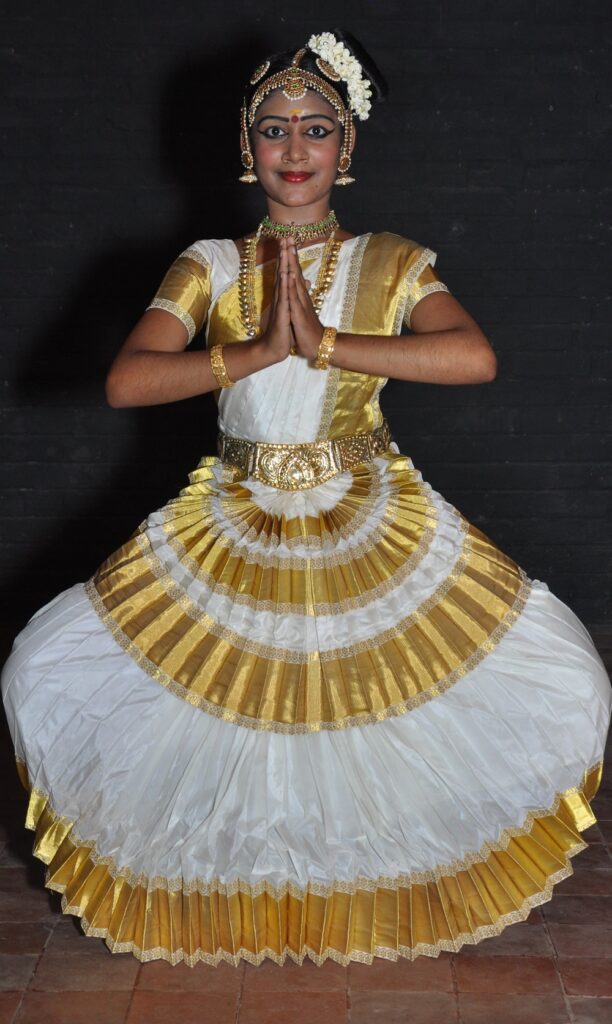Choreographing Cholkettu highlighting its blend of pure movements, emotional expressions, and storytelling.
Choreography The process of organizing and arranging dance movements appropriately in tandem with music and rhythm is called choreography. The choreographic process leads to the creation of a dance production by orchestrating dance movements into an aesthetically pleasing visual outcome. The choreographic process for any Indian classical dance form significantly depends on the structural framework that the respective form provides, especially bounded by the aesthetic characteristics of that form. Here, we discuss the choreographic process adopted in Mohiniyattam.
Indian classical dance forms usually have three characteristics called Nritha, Nrithya, and Natya (Nataka). Nritha pertains to the movements of the body, often referred to as pure dance. There are specific movements related to nritha, and interpretations are often abstract. Nrithya combines movements with bhava or emotions. And, Natya refers to the storytelling dimensions of dance that often involve intricate acting technique. Ideally, the choreographic process caters to all these three-dimensional aspects of dance.

A Mohiniyattam concert often involves 5 to 7 different performances that differently combine Nritha, Nrithya, and Natya. After the Ganesa Stuthi, the first performance often is a Cholkkettu, which is considered a Vandana Nritha (Invocation dance). Cholkkettu establishes the characteristics of the Mohiniyattam performance by introducing the style of Mohiniyattam through its Nritha.
Choreograpy of Cholkkettu
Often Cholkkettu begins by praising Goddess Bhagavati and then explores the intricacies of rhythm by choreographing movements that go well with music and rhythm. Finally, it concludes with a Siva Sthuthi. For the Devi Stuthi, bhakti/devotion is very important. Then comes the pure dance pattern. Thus, the verse, which places Shakti and Shiva beyond the pure dance, brings them gradually closer to each other and ultimately brings them together at the end of the dance with Shiva & Shakti. Shiva is praised in the lines at the end of the verses.
Moksha is the union of Shiva Shakti. Bhakti is important in this. The following Cholkattu end with clean and aesthetic rhythms of the raga-talams, adding steps, adavus (dance units), and poses, ending with a muthaipu at the end of each stanza. Begin by praising Lord Shiva in the last part and meditating on Sri Parvati in your mind as a salutation dance. In the last part, devotion itself should be given importance. The emphasis should be on the correctness of the verses and the syllables of the verses that come between the first and the last devotional. At the same time, it can be thought that the choreography will be better if the rhythm and suitable tunes are combined. But it can be said that the choreography is perfect only when it is done without mistakes.
Assisted by: Sreekanth Kartha
Photo Courtesy: Natanakairali Archives”




